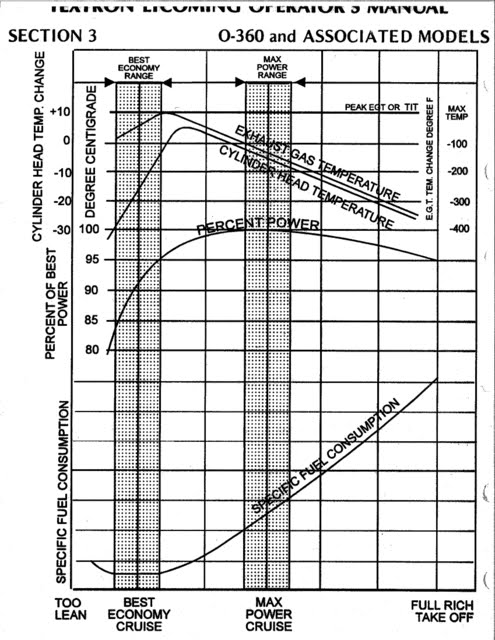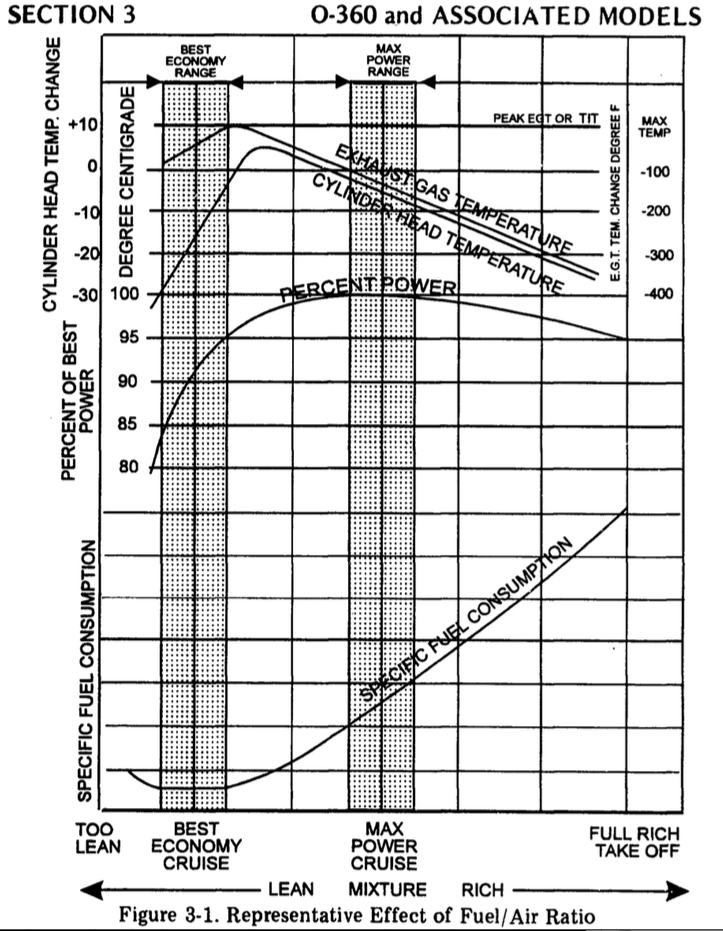Head Scratcher - High CHT, drops during leaning before peak EGT
I apologize in advance for the long post....
I've been fighting high CHT on cylinder #3 for years now. I have a Mattituck 0-360 A1A running 2 slick mags with a Whirlwind 151 prop. I've read, re-read and read again many of the threads here on VAF about high CHT's, all of the Deakin articles and a lot of papers by Mike Busch and I still can?t figure out why #3 is running so hot.
I've checked the baffles, and while not perfect, they're pretty good. I need to spend more time making them perfect because I'm sure there is some room for improvement here. Both mags have been checked and are working fine, timing checked to 25 BTDC. All 4 cylinders consistently compression check in the high 70's and I can?t' find any indication of an induction leak. I?ve checked all 4 CHT probes in a bath of hot oil and they all read within 1 degree of each other. I have the screw in type CHT probes and an Aerospace Logics digital CHT and EGT gauge. I need to double check the takeoff fuel flow but I believe it is around 15gph.
Climbing out from sea level at 125kts, WOT and 2,500 RPM the #3 CHT always goes to 450. When leveling off for cruise, leaning to about 11gph it comes down to around 430. The other 3 cylinders CHT peak around 380 in climb and then settle down to 325 or so in cruise. All 4 EGTs seem normal and are consistently in the 1300 range.
This past Friday my experience with the #3 CHT defied everything I have read about air cooled engines and the relationship between mixture, CHT and EGT. I leveled off at 4,500?, 24? and 2,500 RPMS and started leaning the engine. From 11gph to 9gph all EGTs rose, with #3 peaking around 1360. During this time, while the EGT rose about 200 degrees, the CHT fell from 449 to 380. The other 3 CHTs all stayed the same, around 350. The engine seemed very happy operating at 9gph, a little vibration but not at all bad, and all CHTs were 380 or less. I used to think the #3 cylinder may be running lean, but if that were the case I would have expected the EGT to peak long before the other cylinders and then start to drop in temp, with the CHT dropping after EGT peaked. This was not the case, #3 was the first to peak and the CHT began to drop almost immidiately and did so all the while the EGT was rising. I'm completely confused.
I don?t get it, why would the CHT drop on #3 as I leaned the mixture? I haven?t had time to go back up and try this again, to see if aggressive leaning lowers the CHT but I plan to do so this Friday. In the mean time, what does the VAF brain trust think? Does this make sense?
I apologize in advance for the long post....
I've been fighting high CHT on cylinder #3 for years now. I have a Mattituck 0-360 A1A running 2 slick mags with a Whirlwind 151 prop. I've read, re-read and read again many of the threads here on VAF about high CHT's, all of the Deakin articles and a lot of papers by Mike Busch and I still can?t figure out why #3 is running so hot.
I've checked the baffles, and while not perfect, they're pretty good. I need to spend more time making them perfect because I'm sure there is some room for improvement here. Both mags have been checked and are working fine, timing checked to 25 BTDC. All 4 cylinders consistently compression check in the high 70's and I can?t' find any indication of an induction leak. I?ve checked all 4 CHT probes in a bath of hot oil and they all read within 1 degree of each other. I have the screw in type CHT probes and an Aerospace Logics digital CHT and EGT gauge. I need to double check the takeoff fuel flow but I believe it is around 15gph.
Climbing out from sea level at 125kts, WOT and 2,500 RPM the #3 CHT always goes to 450. When leveling off for cruise, leaning to about 11gph it comes down to around 430. The other 3 cylinders CHT peak around 380 in climb and then settle down to 325 or so in cruise. All 4 EGTs seem normal and are consistently in the 1300 range.
This past Friday my experience with the #3 CHT defied everything I have read about air cooled engines and the relationship between mixture, CHT and EGT. I leveled off at 4,500?, 24? and 2,500 RPMS and started leaning the engine. From 11gph to 9gph all EGTs rose, with #3 peaking around 1360. During this time, while the EGT rose about 200 degrees, the CHT fell from 449 to 380. The other 3 CHTs all stayed the same, around 350. The engine seemed very happy operating at 9gph, a little vibration but not at all bad, and all CHTs were 380 or less. I used to think the #3 cylinder may be running lean, but if that were the case I would have expected the EGT to peak long before the other cylinders and then start to drop in temp, with the CHT dropping after EGT peaked. This was not the case, #3 was the first to peak and the CHT began to drop almost immidiately and did so all the while the EGT was rising. I'm completely confused.
I don?t get it, why would the CHT drop on #3 as I leaned the mixture? I haven?t had time to go back up and try this again, to see if aggressive leaning lowers the CHT but I plan to do so this Friday. In the mean time, what does the VAF brain trust think? Does this make sense?
Last edited:






